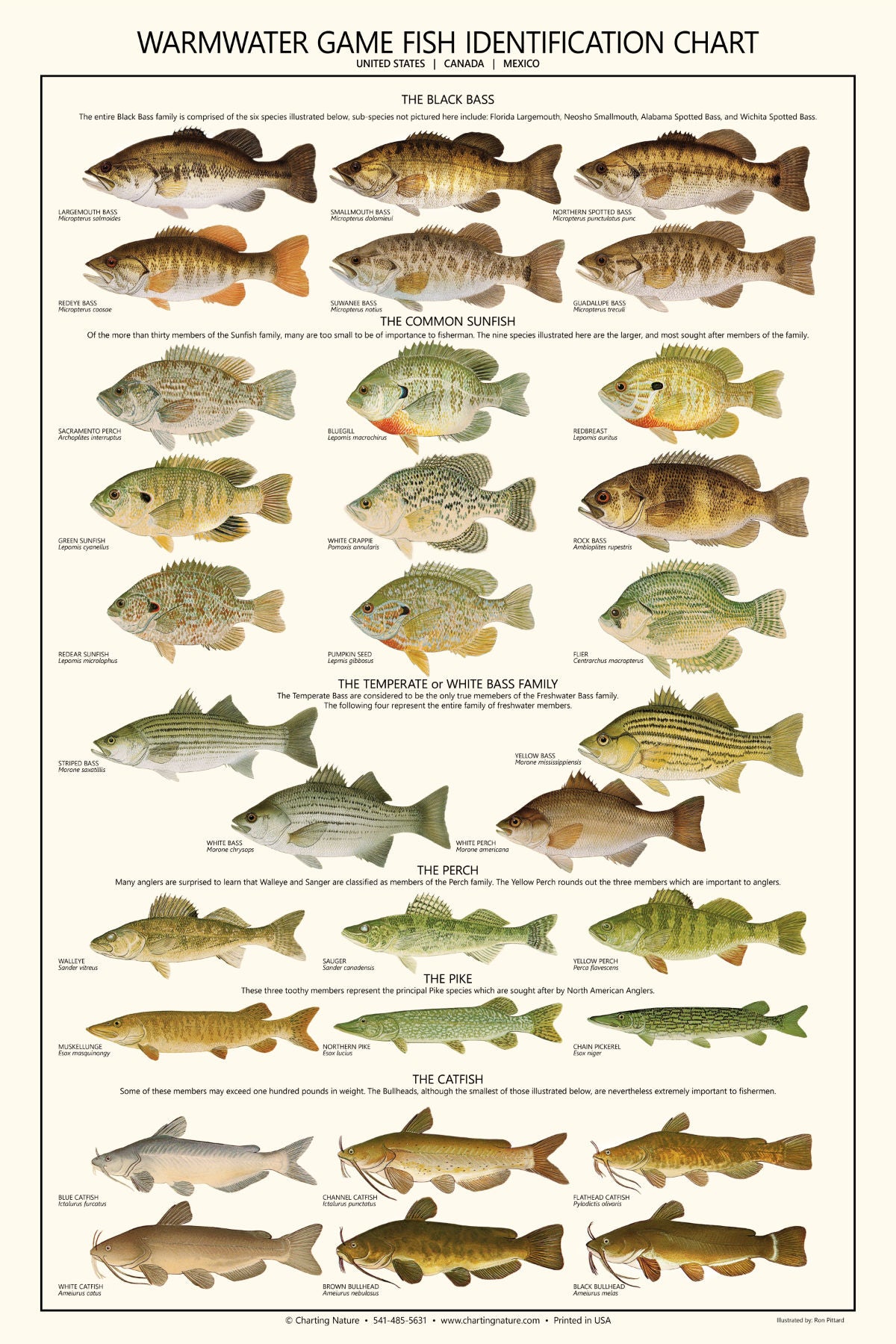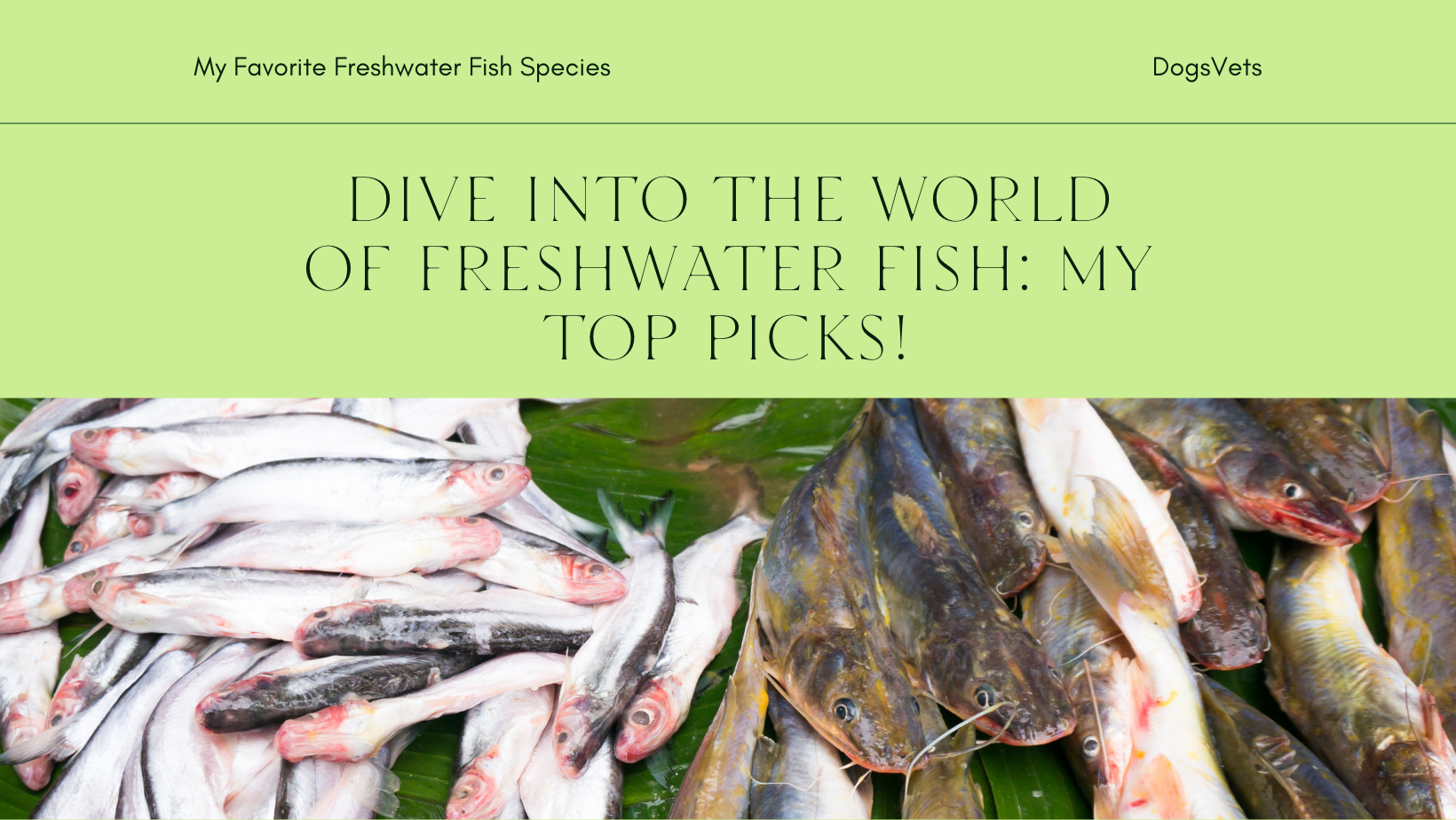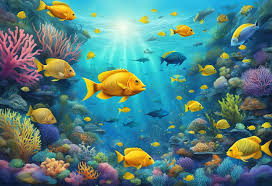Last Updated on June 5, 2024 by Dog Lover
Dive into the World of Freshwater Fish: My Top Picks!
Freshwater Fish Overview
As a passionate angler and fish enthusiast, it’s been my joy to explore the diverse world of freshwater fish. From serene lakes to rushing rivers, these habitats are teeming with life.
But, as I’ve come to learn, our freshwater finned friends face numerous threats that jeopardize their existence.
Threats to Freshwater Fish
I was disheartened to learn from Earth.org that up to a third of our global freshwater fish populations are at risk of extinction. This is a staggering figure, and it highlights the fragility of their existence.
The main culprits of this decline are habitat destruction, water pollution, and unsustainable fishing practices.
Additionally, climate change is altering water temperatures and flow patterns, creating hostile environments for many species. The World Wildlife Fund reports a decline in migratory fish numbers by three-quarters over the past 50 years, and the extinction of 80 freshwater fish species.
This is a clear signal that we need to take action to protect these vital aquatic ecosystems.
Importance of Freshwater Fish
You might wonder why we should care about the plight of freshwater fish. Well, they are more than just a hobby or sport; they are an integral part of our global ecosystem.
Freshwater fish are a crucial source of protein for people around the world and play a significant role in the diet of various wildlife, including Alaska’s grizzly bears and the unique Irrawaddy dolphin.
Furthermore, freshwater fish act as indicators of ecosystem health. Their presence and abundance signal thriving ecosystems. When fish populations dwindle, it’s often a sign that the ecosystem is in trouble. Preserving freshwater fish isn’t just about saving the fish themselves—it’s about ensuring the health and balance of our entire freshwater ecosystems.
From warmwater to coldwater and coolwater species, freshwater fish come in all shapes and sizes, each adapted to their unique environmental niches.
It’s amazing to think that more than half of all known fish species reside in freshwater, with around 30% of them now facing extinction (World Wildlife Fund).
As we continue to delve into the world of freshwater fish, let’s bear in mind their importance and the urgent need to protect them. Whether we’re discussing tropical fish, comparing them to their saltwater fish counterparts, or selecting the right fish food, each conversation should be infused with an awareness of their delicate status and our responsibility to safeguard their future.
Types of Freshwater Fish
As someone who’s always been captivated by the aquatic world, I find freshwater fish particularly fascinating. They come in an array of vibrant colors, shapes, and sizes, making them a joy to observe and learn about.
Freshwater fish species are generally categorized based on their temperature preferences, which also relates to the oxygen levels in the water they inhabit.
Let me take you through the different types of freshwater fish, specifically focusing on warmwater, coldwater, and coolwater species.

Warmwater Fish Species
Warmwater fish thrive in waters that are often above 80 degrees Fahrenheit. These species are well-adapted to environments with lower oxygen levels compared to cooler waters.
Some of my favorite warmwater species include the energetic Largemouth Bass and the feisty Bluegill. Not only are they a challenge to catch, but they’re also quite the sight when they breach the water’s surface!
| Warmwater Fish Species | Preferred Temperature Range |
|---|---|
| Largemouth Bass | Above 80°F |
| Bluegill | Above 80°F |
| Channel Catfish | Above 80°F |
Warmwater species are commonly found in ponds, lakes, and slow-flowing rivers and streams. They’re the type of fish you’d likely encounter on a lazy summer fishing trip.
Remember, these fish demand specific care, so if you’re planning to keep them in an aquarium, make sure to research their needs thoroughly, including fish food preferences.

Coldwater Fish Species
On the flip side, coldwater fish prefer chilly environments, typically water temperatures below 60 degrees Fahrenheit. These species, such as the majestic Rainbow Trout and the elusive Brook Trout, require higher oxygen levels and crystal-clear waters to thrive.
I’ve always been amazed by the resilience of coldwater fish. They can be found in the coldest streams and lakes where you’d think no fish could survive.
If you’re a fan of trout like I am, you’ll understand why these hardy swimmers are a staple in the world of freshwater fishing.
| Coldwater Fish Species | Preferred Temperature Range |
|---|---|
| Rainbow Trout | Below 60°F |
| Brook Trout | Below 60°F |
| Brown Trout | Below 60°F |

Coolwater Fish Species
Coolwater fish species enjoy the best of both worlds, preferring water temperatures that range from the mid-60s to the high 70s Fahrenheit.
These fish, like the mighty Muskellunge and the popular Walleye, are often found in habitat conditions between those favored by warmwater and coldwater species.
It’s interesting to note that coolwater species can often adapt to a wider range of temperatures, which can make them a bit easier to care for if you’re considering an aquarium setup.
Just remember that while they’re adaptable, they still have specific environmental needs that must be met.
| Coolwater Fish Species | Preferred Temperature Range |
|---|---|
| Muskellunge | 60s to 70s°F |
| Northern Pike | 60s to 70s°F |
| Walleye | 60s to 70s°F |
The world of freshwater fish is as diverse as it is beautiful. Whether you’re an angler looking to catch a trophy fish or an aquarium enthusiast eager to create a slice of nature at home, understanding these temperature-based categories is key.
And if you’re interested in how freshwater fish compare to their ocean-dwelling counterparts, you might want to read about saltwater fish and tropical fish.
Meanwhile, you can find more detailed information on all the different types of fish right here on our site. Dive in and enjoy the aquatic adventure!
Popular Freshwater Fish Species
As an avid angler and freshwater enthusiast, I’ve had the pleasure of encountering a variety of fish in my adventures. Here, I want to highlight some of my top picks among freshwater fish species.
These are not just any fish; they are the ones that have captured my attention and made every fishing trip memorable.

Largemouth Bass
I can’t talk about my favorite freshwater fish without mentioning the Largemouth Bass. These are the most popular freshwater game fish in the U.S., and for good reason.
Found in waters in almost every state, Largemouth Bass are known for their intelligence, making them a challenging and satisfying catch (Take Me Fishing).
| Trait | Detail |
|---|---|
| Average Length | 18-24 inches |
| Average Weight | 1-4 pounds |
| Habitat | Lakes, rivers, and reservoirs |
A day spent chasing Largemouth Bass is a day well spent. Their behavior, the way they strike the bait, and the fight they put up are exhilarating.
It’s a game of wits between me and the fish, and I relish every moment of it.

Black Crappie
Then there’s the Black Crappie, a fish that’s as fun to catch as it is to say. It’s a common catch for beginner anglers, which makes it a great introduction to the sport.
These fish are easily hooked, but knowing what they eat and where they live can greatly improve your chances of reeling them in (Take Me Fishing).
| Trait | Detail |
|---|---|
| Average Length | 8-12 inches |
| Average Weight | 1/4-1 pound |
| Habitat | Ponds, lakes, and slow-moving rivers |
The Black Crappie may not be the biggest fish in the pond, but it’s certainly one of the most satisfying to catch.
There’s something about the simplicity of fishing for Crappie that brings me back to the basics and joy of fishing.
Rainbow Trout
And how could I forget the Rainbow Trout? Fly fishing for these beauties is an experience unlike any other.
Known for their distinct, vibrant coloration, Rainbow Trout are native to the West Coast but have been introduced to waters all over the country (Take Me Fishing).
| Trait | Detail |
|---|---|
| Average Length | 20-30 inches |
| Average Weight | 2-8 pounds |
| Habitat | Cold-water tributaries of the Pacific Ocean |
There’s a finesse to catching Rainbow Trout that’s both challenging and rewarding. Matching the hatch and presenting the perfect fly are arts in themselves. When I manage to hook one, it’s a testament to skill and patience.
Each of these species offers a unique fishing experience that I find deeply rewarding. If you’re looking to expand your horizons beyond saltwater fish or tropical fish, consider these freshwater favorites.
And don’t forget to feed them the right fish food to keep them thriving. For more on the different types of fish you can catch or keep, make sure to dive deeper into the topic. Happy fishing!

Freshwater Habitats
As someone who’s constantly mesmerized by the aquatic world, I’ve learned that freshwater habitats are not only fascinating but also crucial for biodiversity.
These ecosystems are teeming with life, and they’re essential for the survival of numerous species, including our beloved freshwater fish.
Biodiversity in Freshwater Ecosystems
Did you know that freshwater habitats are home to more than 100,000 species of plants and animals? It’s true! From the fish we’re passionate about to snails, worms, turtles, and even larger creatures like alligators and beavers, freshwater ecosystems are incredibly diverse.
There’s also an array of birds, insects, and amphibians that rely on these waters (National Geographic Kids).
What’s more, these ecosystems don’t just support animal life; they’re pivotal for human sustenance as well. According to Forbes, freshwater systems produce more than 40% of all fish consumed globally.
That’s about 7% of all animal protein we eat! And let’s not forget the livelihoods they support – at least 60 million people worldwide work in freshwater fisheries, with women making up more than half of this workforce.
Key Freshwater Habitats
When I think of freshwater habitats, my mind immediately goes to the classics: lakes and rivers.
Lakes can form through various natural processes – glacier movements, volcanic eruptions, or shifts in Earth’s crust, while rivers often start from melting snow or ice that flows down mountains to the sea (National Geographic Kids).
Let’s take a look at some of the key freshwater habitats around the world:
| Habitat | Location | Significance |
|---|---|---|
| The Everglades | Southern Florida | Largest freshwater habitat |
| The Amazon River | South America | Second-longest river, flows through six countries |
| Lake Baikal | Siberia | Largest lake, contains one-fifth of the planet’s freshwater |
Each of these habitats supports an incredible variety of life and offers unique conditions for different types of fish. For instance, the Everglades is a haven for species like largemouth bass and black crappie, while Lake Baikal is home to the famous Baikal sturgeon.
Exploring freshwater habitats is not only a journey into the world of freshwater fish but also a deep dive into some of the most productive and life-sustaining ecosystems on Earth.
Whether we’re talking about tropical fish in the Amazon or the diverse species found in the Everglades, it’s clear that these waters are essential for both aquatic and human life.
And while we’re discussing habitats, let’s not forget about the importance of maintaining these ecosystems. Freshwater habitats face numerous threats, from pollution to overfishing, and it’s our responsibility to protect them.
By learning about these environments and the creatures that inhabit them, we can better appreciate the role freshwater plays in our world. Plus, it gives us all the more reason to ensure our fish food choices are sustainable and supportive of these vital ecosystems.
















